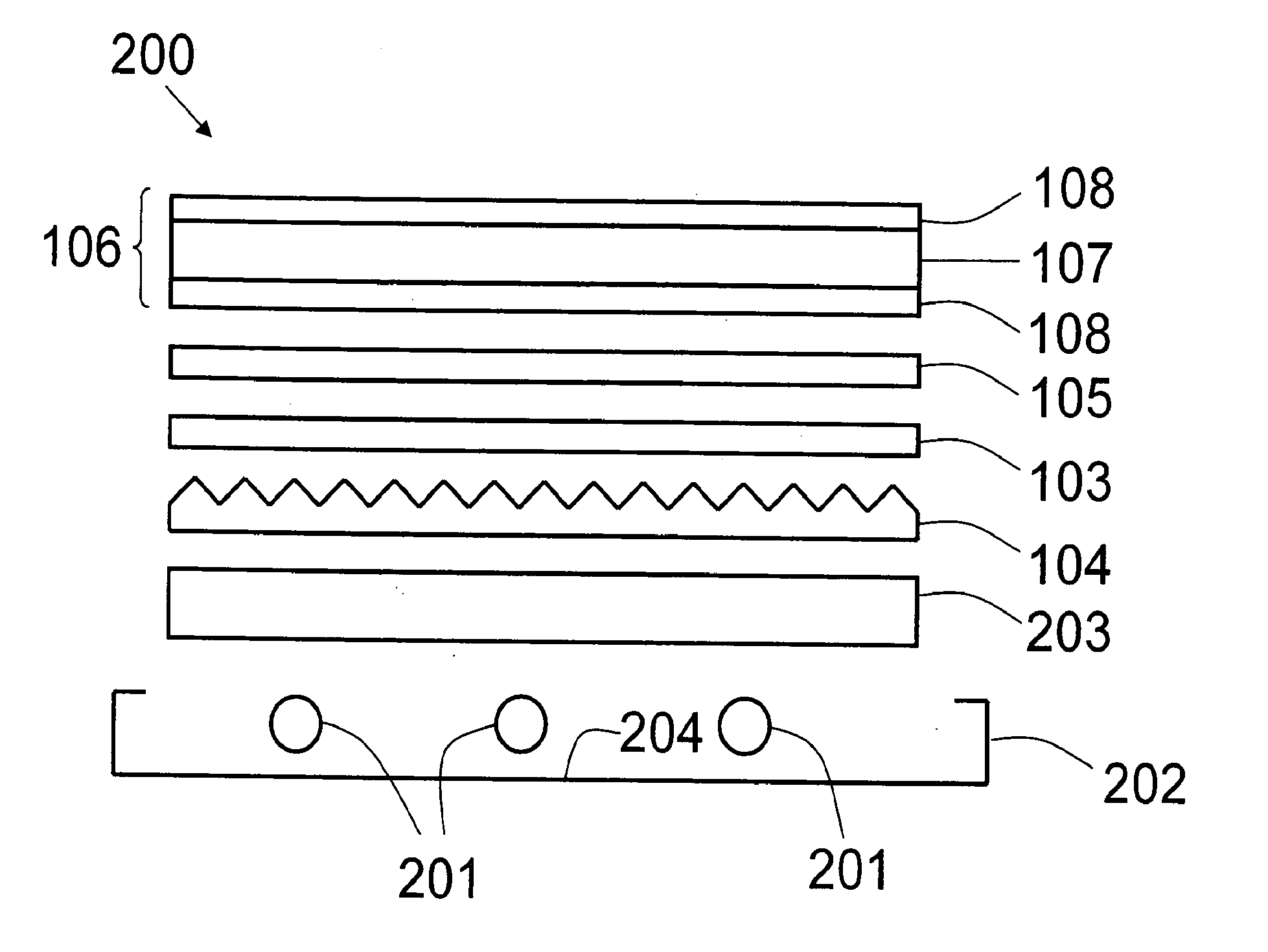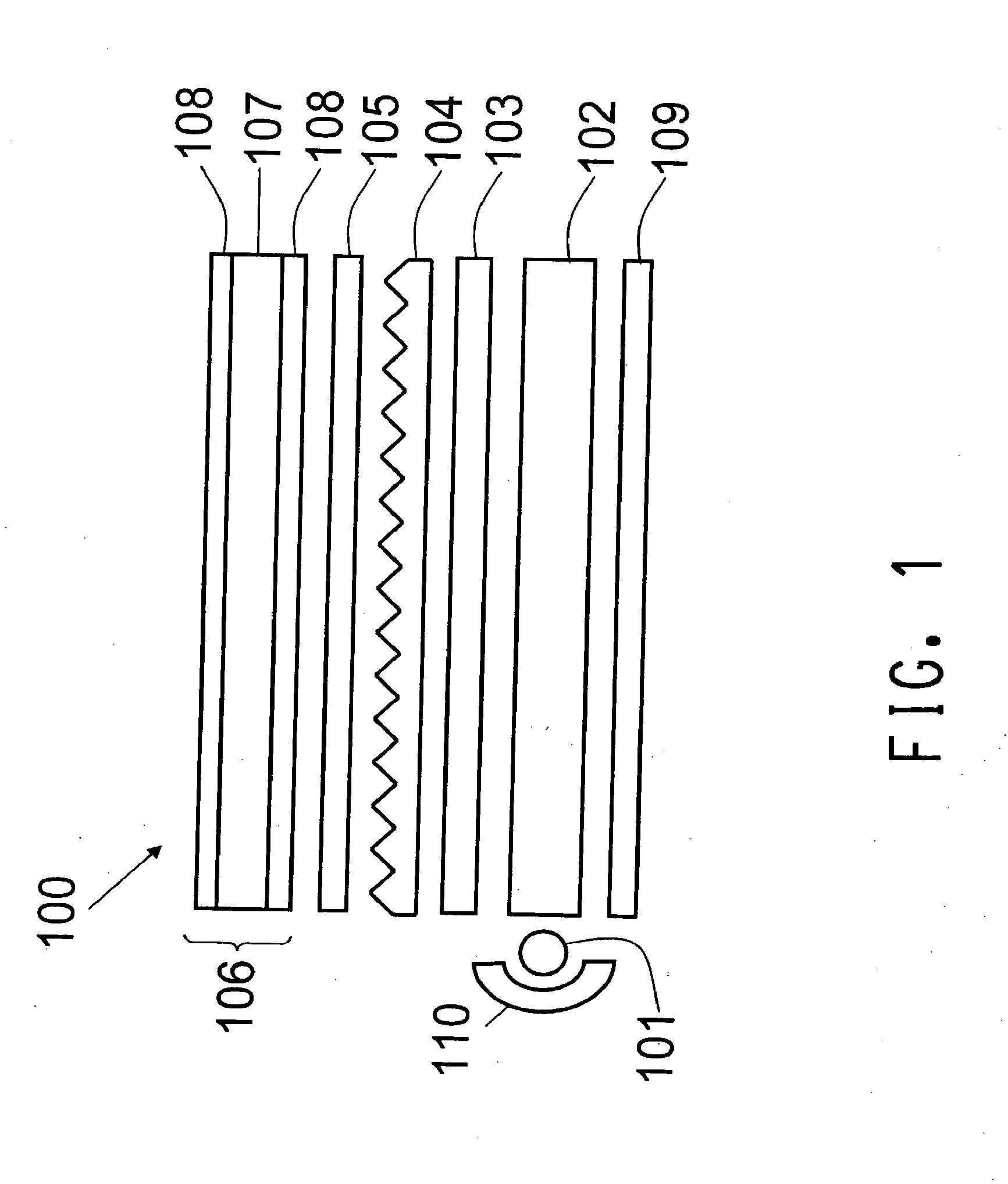Diffuse reflector comprising nonwoven sheet with binder layer comprising binder and scatterer of visible light
a technology of diffuse reflector and nonwoven sheet, which is applied in the direction of mirrors, instruments, optics, etc., can solve the problems of insufficient reflection performance, significant higher cost, and substantial demand for portable computer lcds
- Summary
- Abstract
- Description
- Claims
- Application Information
AI Technical Summary
Benefits of technology
Problems solved by technology
Method used
Image
Examples
example 1
Diffuse Reflector
[0119]The slot die coating head method is used to prepare a diffuse reflector comprising a nonwoven sheet having on one face a binder layer comprising a binder and a scatterer of visible light dispersed in the binder. Slot die coating is used due to the ability to directly meter a coating avoiding recirculating flow of excess material, the ability to handle high viscosity liquids, provide uniformity in both transverse and machine direction as well as minimize premature or localized drying which can create streaks, debris and related coating disturbances.
[0120]A 35.6 cm (14 in) wide roll of the previously described nonwoven sheet is unwound at a line speed of 152.4 cm / min (5 ft / min) and passed over a solid support backup roll. The binder containing scatterer used is Behr Premium Plus® Exterior Semi-Gloss Ultra Pure White No. 5050, available from BEHR Process Corporation, CA, USA, a white acrylic latex paint having 49% solids by weight, a density of 1.25 g / cm3, and vi...
example 2
Diffuse Reflector
[0129]The procedure of Example 1 is followed for this example with the following modifications.
[0130]The white acrylic latex paint is directly metered on to the moving nonwoven sheet surface at a rate of 60 cm3 / min at a width of 33.0 cm (13 in) and wet thickness of about 40 μm. The thickness of the resultant binder layer after drying is approximately 15 μm. The average RVIS of the diffuse reflector is 96.17%. The line labeled 3 in FIG. 3 is a graph of the total reflectance spectrum (reflectivity (%) versus wavelength (nm)) for the EX. 2 diffuse reflector.
example 3
Diffuse Reflector
[0131]The procedure of Example 1 is followed for this example with the following modifications.
[0132]As earlier described in the section titled NONWOVEN SHEET UTILIZED IN EXAMPLES 1, 2 AND 3, the nonwoven sheet of EX. 3 contains about 10 weight percent of Ti-Pure® R-101 titanium dioxide particles dispersed in the polymer phase forming the nonwoven sheet fibers.
[0133]A white paint is prepared comprising 70 weight percent of the aforementioned Behr Premium Plus® Exterior Semi-Gloss Ultra Pure White No. 5050 and 30 weight percent of Ti-Pure® R-741 titanium dioxide slurry, available from DuPont Titanium Technologies, Del., USA. This white paint is coated on to the nonwoven sheet surface by the aforementioned slot die coating head method such that the coating weight of the resultant binder layer after drying is 42±5 g / m2. A backing support sheet of 30 μm thick white PET sheet is laminated to the binder layer face of the diffuse reflector with a 5 μm thick layer of pressu...
PUM
| Property | Measurement | Unit |
|---|---|---|
| pore diameter | aaaaa | aaaaa |
| pore diameter | aaaaa | aaaaa |
| pore diameter | aaaaa | aaaaa |
Abstract
Description
Claims
Application Information
 Login to View More
Login to View More - R&D
- Intellectual Property
- Life Sciences
- Materials
- Tech Scout
- Unparalleled Data Quality
- Higher Quality Content
- 60% Fewer Hallucinations
Browse by: Latest US Patents, China's latest patents, Technical Efficacy Thesaurus, Application Domain, Technology Topic, Popular Technical Reports.
© 2025 PatSnap. All rights reserved.Legal|Privacy policy|Modern Slavery Act Transparency Statement|Sitemap|About US| Contact US: help@patsnap.com



